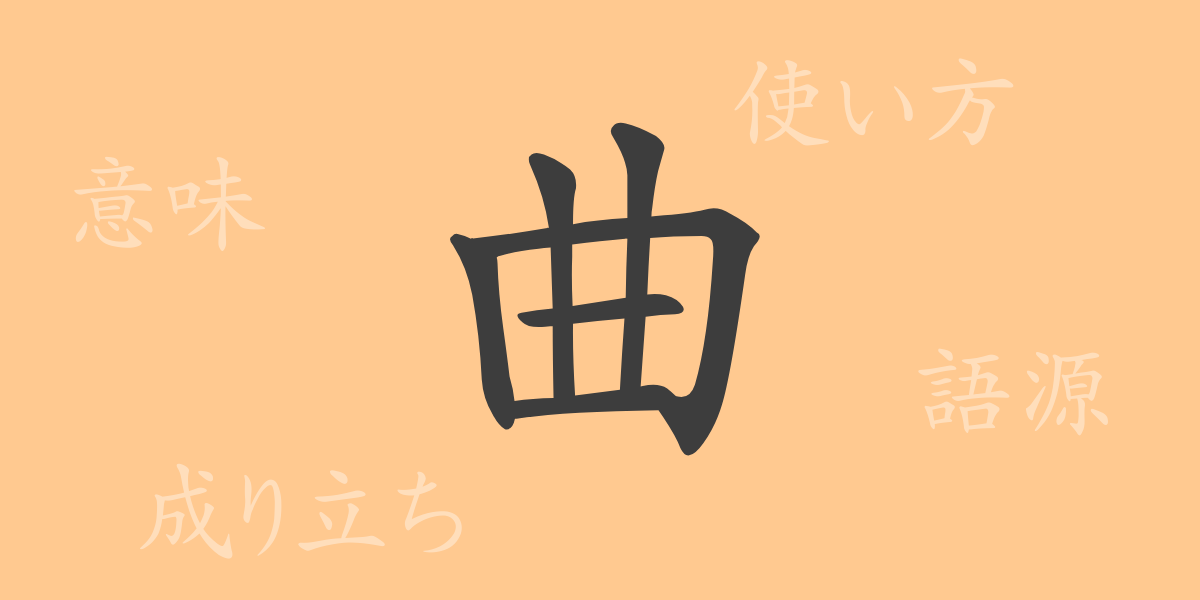There are thousands of kanji characters in Japanese, each with its own unique history and meaning. This time, we focus on the kanji “曲(きょく).” This single character encompasses various aspects that enrich our world, from music to everyday life. In this article, we will delve into the origins, meanings, usages, and even the idioms and proverbs associated with “曲(きょく),” exploring its full charm.
Origin of 曲(きょく)
The origin of “曲(きょく)” comes from ancient characters that originally meant to bend. It was used to depict things deviating from a straight line, such as curves or bent objects. Over time, “曲(きょく)” also came to be used to describe musical notes and melodies. Thus, “曲(きょく)” became a kanji symbolizing not only changes in shape but also rhythms and melodies in music.
Meaning and Usage of 曲(きょく)
“曲(きょく)” primarily means “to bend,” “bent,” or “to curve.” However, it is also used in the context of music to refer to a musical piece or composition, such as in “一曲(いっきょく)” (one piece of music). Figuratively, it can be used to mean distorting the truth, as in “事実を曲げる(じじつをまげる).” Additionally, “曲解(きょっかい)” refers to the misinterpretation or distortion of words or meanings.
Readings, Stroke Count, and Radical of 曲(きょく)
The kanji “曲(きょく)” is included in the list of common kanji characters and is used in various contexts.
- Readings: The on’yomi (Chinese reading) is “キョク(きょく),” and the kun’yomi (Japanese reading) includes “ま.がる,” “ま.げる.”
- Stroke count: “曲(きょく)” has six strokes.
- Radical: The radical is “曰(ひらび),” representing a curved line.
Idioms, Expressions, and Proverbs Using 曲(きょく)
Many idioms, expressions, and proverbs in Japanese include the kanji “曲(きょく).” For example, “曲学阿世(きょくがくあせい)” means bending the truth to flatter the world, “一曲入魂(いっきょくにゅうこん)” means putting one’s soul into a single piece of music, and “曲者(くせもの)” refers to someone or something unusual or untrustworthy. These expressions reflect the Japanese people’s sensitivity to language and the deep meanings carried by a single kanji character.
Conclusion on 曲(きょく)
The kanji “曲(きょく)” carries diverse meanings, including shapes, music, and even behaviors or personalities. In Japanese, “曲(きょく)” is used both on its own and in combination with other kanji to create unique expressions. The rich expressive power of this single character reveals the depth of Japanese culture and the beauty of its language. Next time you encounter “曲(きょく)” in daily life, take a moment to appreciate its various meanings and charms anew.

























